Clean the (diet) Slate: Part 1
This is the first post of a 3-part series that will help you begin to lose weight or troubleshoot why you simply can’t lose weight despite trying everything. In this first post, we will cover the “lower hanging fruits” that can be addressed right off the bat. The second post will address what we consider are the “higher to reach fruits” that may be worth visiting if you’ve tried everything in our first post. The final part to this series will direct you towards some root causes behind your weight difficulties that you may want to investigate further through our functional nutrition programs.
Clean the (diet) slate…
Our Phase 1 program titled, Clean the Slate, is our starting program for all clients looking to lose weight and/or get to the root of their health issues. Clean the Slate is based on three core principle:
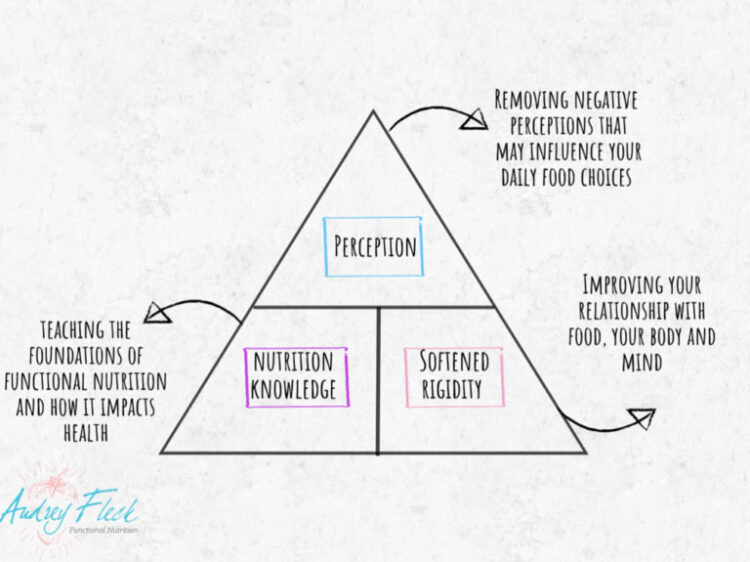
Perception: What we do, say, and think about ourselves impacts how we act around food. Are your food selections influenced by weight loss ads, food companies, or your friend that’s always on a diet? We will teach you how to properly choose foods that will nourish you to promote wellness and vitality.
Softened Rigidity: Do you set food rules for yourself, count every calorie consumed, or “punish” yourself by over-exercising after eating past comfort? Improving your relationship with food allows you to feel food freedom by listening to your hunger and fullness cues. We find that most people actually under-eat!
Nutrition Knowledge: By promoting positive diet perception and softening the rigidity around healthy eating, we will teach you the fundamentals of functional nutrition and how our diet, environment, lifestyle, and genetic predispositions impact our health.
These three principles work in tandem to create our “clean the slate” model. Perception is the driving force in this model. We develop an awareness of the influence food has on the body and mind, positively impacting our self-perception.
Ditching Diet Culture
Diet culture is all encompassing- it is a set of beliefs that values shape, size and weight over health and well-being. We are surrounded by it’s repercussions daily as we witness its effects watching TV, listening to the radio, browsing instagram or Facebook, passing by a magazine rack, or overhearing a conversation at the grocery store. We are surrounded by it!
Diet culture has tainted our perception of health. Health is not simply what size pants we are or the foods we eat. Our well-being and health (physical, mental, and emotional) is how we FEEL. Our aim is for you to ditch diet culture and focus on food as fuel and nourishment versus being a burden.
We are weight loss experts, but please call us the ‘health gain’ experts instead!
We dissociate our work from weight loss industry. Here is why…
…They promise solutions that might work short term, but hardly ever long term. This perpetuates the yo-yo diet ferris wheel. You get on the diet, and lose weight. You get off the diet and gain the weight back, often more.
…They sucker you in with before and after pictures. What they usually don’t tell you is how starved or terrible the person felt in order to drop so much weight in such a short period of time.
Most quick and easy weight loss programs don’t address the actual reason why it’s hard to lose weight, like your relationship with food, hormonal imbalances, your emotional connection to food, and inflammation.
The worst is that programs that offer a quick fix and not a long-term solution perpetuates weight gain. In fact, there is evidence that weight cycling (losing, gaining, losing, etc.) was correlated with increased body fat, belly fat, and increasing the likelihood of gaining weight in those who intentionally try to lose weight. (1)
You don’t need to feel ashamed or like a failure when you’ve tried and tried again to lose weight in the past. We’ve met clients who have been on the yo-yo diet ferris wheel all of their lives and know there has to be a better way.
So you want to lose weight and are invested into finding a long term solution? You’ve come to the right place. Let’s get started…
We are going to first talk about what we refer to as the “lower hanging fruits” of dietary changes that pretty much everyone needs to make.
1. You aren’t eating food that fuels your cells.
In other words, you aren’t eating real food. We encourage our clients to consume food that is closest to what it appeared as when harvested from the earth. Is there an Oreo tree that you can harvest cookies off of? It’s a delicious thought, but it’s the right kind of question to ask when trying to determine how wholesome a food is.
Here are a few tidbits to make buying packaged foods less processed, and more real.
Look at the ingredients list on a food label before looking at anything else! A “better” packaged food will have ingredients that are recognizable with a minimal list. A few things that are red flags that make us question the item are:
How many times do you see the word sugar or a different name for sugar? If sugar is at the beginning or towards the top of the list, the food product is primarily sugar masked as something else, like a granola bar for example. If you see sugar listed in multiple areas… again what you are eating is mostly sugar.

Stone milled and sprouted flours has been around for thousands of years. They are healthier for us because they contain both the germ and bran of the grain, where the nutrients and fiber are contained. Sprouted grain products are made by soaking grains in water until they sprout. They are then ground down and used. During the sprouting process, enzymes are released that help break down the grain, making it easier to digest and the vitamins and minerals more available for us to absorb. Stone ground flours are made under low temperatures, preserving the nutrients it contains instead of damaging them.
Most whole wheat and white flours are made by rolling mills, which use higher pressure and heat to turn grains into flour, killing many of the nutrients. Whole wheat flour contains the entire berry of the plant so it contains more fiber, vitamins, and minerals than white flour. The processing that produces white flour kills the grain’s nutrients and removes the fiber. Bleaching agents, oxidizing agents, and synthetic vitamins and minerals are also added to white flour.
Surely anything made with flour is a processed, man-made food. Flour does not occur in nature. White flour is the most refined type and most often linked to inflammation and chronic diseases. Sprouted flours and stone ground whole wheat is less processed and contain naturally occurring nutrients and fiber.
Ideally, limiting flour altogether is recommended since it turns into sugar rapidly when digested and because grains in excess can often replace healthy foods like vegetables and fruits.
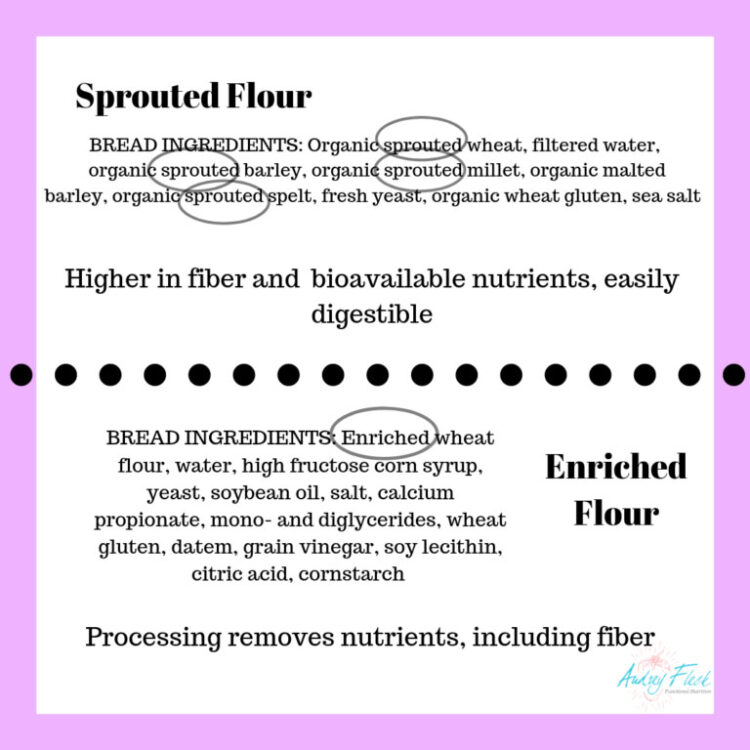
Is there color variety in your diet? Antioxidants, also called phytochemicals, are naturally occuring in plant-based foods and give plants their specific color hue. I look at color variety in diet as your “health insurance.” If you are eating a white/beige/brown colored diet, you likely are not obtaining enough phytochemicals that prevent aging and help stop inflammation. (2)
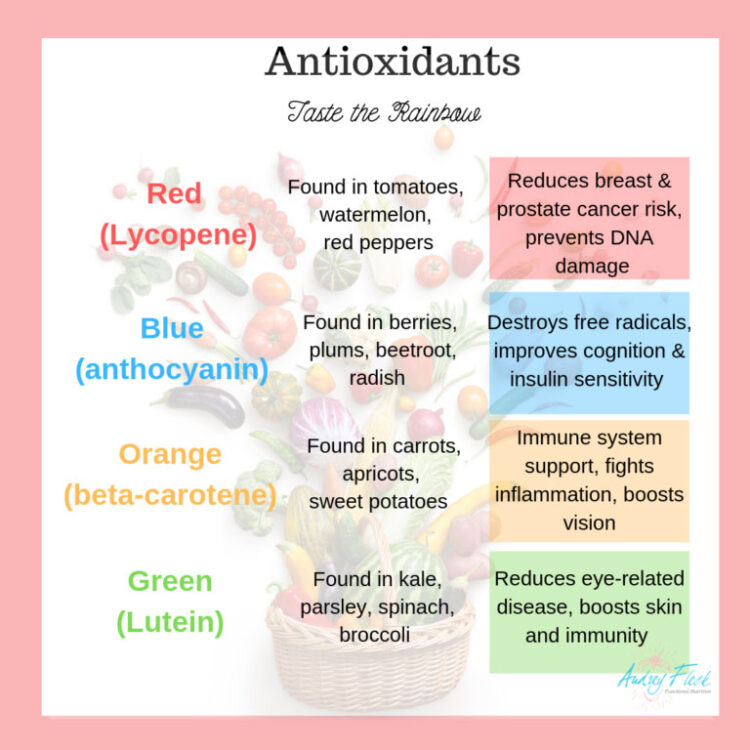
Here’s a quick way to assess if you have color variety in your diet. Write down what you typically eat in a day. Take colored pencils, markers, or crayons and circle each food with that particular color. Something like meat or dairy, you can just use black.
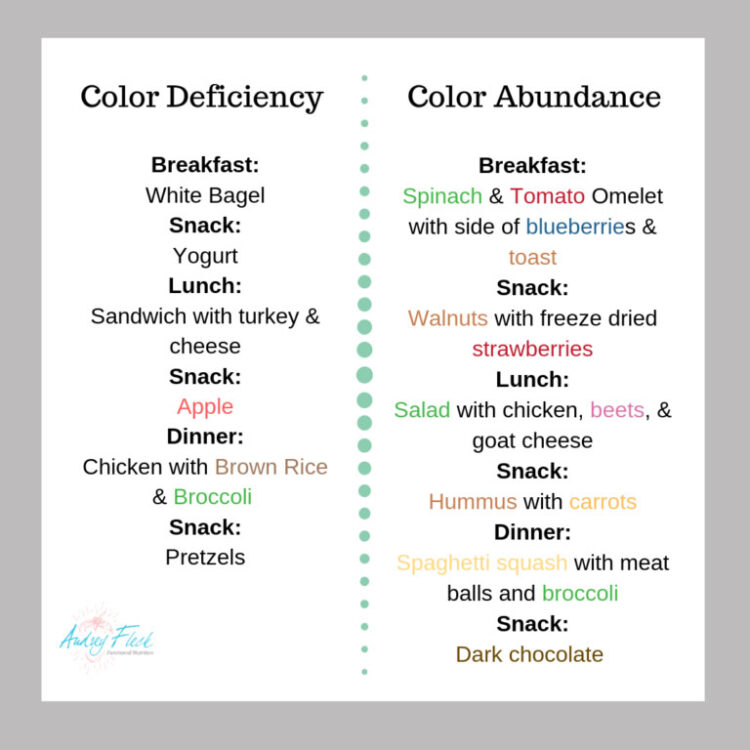
2. You are not eating enough food.
Most people who ask for our help to lose weight and feel better usually need to eat MORE food than eat less. This seems counterintuitive, but let me explain.
Your body is going to only perform as optimally as how you are fueling it. In my practice, we use a calculation that estimates a person’s basal metabolic rate (BMR). Simply put, BMR is your body’s caloric needs that support life-sustaining bodily functions (think: living in a coma). It accounts for maintaining the function of cellular processes that keep us functionally alive.
Additionally, our body burns 10% of our caloric needs digesting and assimilating food (also known as the thermic effect of food) and 30% is spent through physical activity (both planned exercise and all other movements). You can calculate your BMR here and learn more about your daily needs based on your activity.
I’ve had clients guided by their doctors to “just eat 1200 calories” to lose weight. In fact, many cookie cutter programs will basically just slash your calories to create a big deficit. This might result in weight loss, but it’s also going to slow down your metabolism, maybe a little too much.
For different reasons, most women we begin working with are skipping meals, getting by with a quick bite of something, and are usually at too much of a caloric deficit by the end of the day. This pattern matches with their inability to lose weight, feeling chronically fatigued, and food cravings that surface during the afternoon and later into the evening. Their bodies are HUNGRY.

For weight loss, creating an energy deficit by eating less and exercising more may be what you need to lose weight; albeit, sometimes it’s controlling inflammation, improving body composition, or balancing hormones instead. What you don’t need to do is starve yourself.
When someone begins eating below their BMR for a consistent amount of time, it’s cell starvation. Cells begin to perform suboptimally because it’s nearly impossible for the average adult to meet their overall vitamin and mineral needs eating low calorie. What often gets forgotten is that your body relies on nutrients to convert food into energy and, boom, burn a calorie. Hormones are also one of the first areas in the body that start to become sluggish since sexual function is not crucial for surviving (only reproducing). Overall energy begins to suck.
I like this study that reviewed menus for four popular diets and calculated calorie and micronutrient intakes. They found that menus averaged around 1748 calories and only 11 out of 27 micronutrients were found to be sufficient based on the recommended daily intake (RDI of nutrients). To meet 100% of the RDI for the 27 micronutrients, an average of 27,575 calories would need to be consumed. Vitamin D, B7, Vitamin E, chromium, iodine, and molybdenum were the most consistently low nutrients consumed. When these 6 nutrients were taken out of consideration, an average calorie intake of 3475 would still be required to reach 100% of the remaining 21 micronutrients based on the RDIs.
At Functional Origins…
…we don’t like calorie counting and never recommend it. We do determine your nutritional needs to base our recommendations off of so that we are pointing you in the right direction. We prefer to TEACH you how to eat balanced meals, learning about how carbs, proteins, and fats fit in, versus telling you to just keep track of calories.
If weight loss is a goal, we figure out how much you should eat that will still create a deficit to promote weight loss. We like to start with recommending the highest amount of food intake that will still aid in weight loss. This might promote a slower and more gradual weight loss, but it is more maintainable long term.
My last thought for you is whatever you do to lose the weight, you should also do to maintain the weight. In other words, if you want to find long-term success, make your diet and exercise changes a part of your lifestyle.
3. Your eating pattern is sending your blood sugar and insulin on a rollercoaster ride.
Blood sugar balance is crucial for weight loss and balancing overall hormonal health.
Carbohydrate foods turn into your blood sugar (glucose). Whenever you consume carbs, your body produces insulin, a hormone, that will assist your cells in “opening the door” to allow glucose to enter and fuel each cell.
FYI: Carbohydrate foods are grains, beans, starchy vegetables (like potatoes, peas, corn, winter squash), fruit, and dairy. Non-starchy vegetables (like greens, and cruciferous veggies) contain carbs, but in much lower quantities).
Insulin serves as the principal anabolic (aka building) hormone responsible for proper storage of nutrients following ingestion of a meal. Insulin does not only signal the transport of sugar into your cells, but will also communicate to fat cells to store fat as well. Many years of research have documented a positive relationship between obesity status and insulin levels in animals and humans. (3)
What you eat can influence how quickly your blood sugar and insulin levels spike.
Blood sugar begins to rise typically within 10-15 minutes after ingesting a meal. By one hour, blood sugar usually reaches its peak and begins to decline. The type of food and composition of a meal can influence how blood sugar fluctuates.
Carbohydrate eaten alone will raise blood sugar quicker than carbohydrate consumed with protein and fat. Protein and fat take longer to digest, resulting in slowing down how quickly carbohydrates get digested.
The type of carbohydrate will also influence blood sugar and insulin levels. Refined carbohydrates (think white flour, sugar, processed foods) are rapidly converted into blood sugar. Complex carbohydrates like whole grains, beans, peas, starchy veggies (like potatoes), and fruits take longer to digest. Fiber in food also helps to reduce how quickly blood sugar rises.
A balanced meal contains all macronutrients: protein, carbs, and fat. An imbalanced meal typically lacks one or more of the macronutrients.
If you have ever eaten a meal that is imbalanced or simply a sweet (like ice cream), you might have experienced the blood sugar roller coaster. You feel a burst of energy after the meal, but shortly following (1-2 hours after), you become sluggish and find it hard to keep your eyes open. You may grow hungry or crave sugary foods.
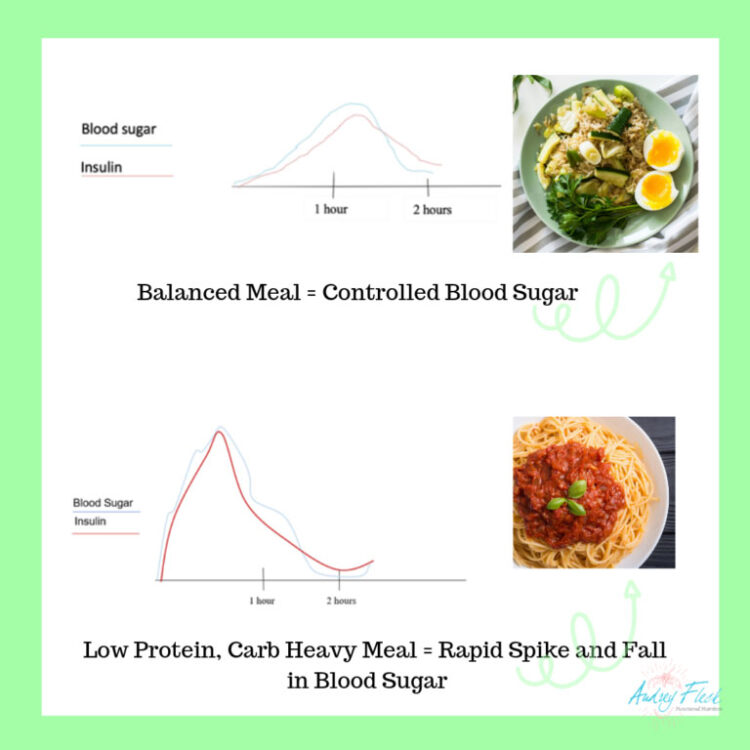
Properlying supporting blood sugar is easy.
Try to consume a protein food with each meal and snack. Here is a simple example: eggs and toast for breakfast instead of a bagel or granola bar. Blood sugar will rise and fall like a gentle wave than a wild roller coaster after that meal.
If you’ve heard of low glycemic load meals, this is what I am talking about. The glycemic load refers to how all foods consumed at a meal impact blood sugar. A bagel for breakfast is a high glycemic meal. A breakfast that incorporates a protein (eggs), a healthy fat (avocado), and carb (toast or potatoes) has a lower glycemic load.
4. You aren’t exercising or if you are it may not be enough to provoke a weight loss response.
Together, diet changes and exercise are the perfect combo for losing weight and maintaining it (plus added benefits beyond the scope of this post).
My clients who are not seeing success with weight loss are typically “dancing around” the topic of exercise and put off fully committing to it.
These women tend to want to do things at home in front of a TV or with random dumbells and pieces of equipment they own, but haven’t used for years. I don’t see this plan work out very often, I think for a few reasons.
First, there might be a lack of intrinsic motivation to put their plan into action.
Two, for anyone who hasn’t worked out in a while, they might not know what to do. With a lack of structure and direction, the mental challenge of getting started can be harder.
Three, many clients fear that they “aren’t ready” to walk into a gym, hire a trainer, or join a class. This is a self-limiting belief that when changed, can be life-changing. “You don’t have to be great to start, but you have to start to be great.” – Zig Ziglar
Don’t get me wrong, I have seen working out at home definitely work out for some people. People who are self motivated, schedule it into their routine, and commit to it are successful. Having a program to follow or a plan really helps too.
If you have been exercising for a while and not seeing a difference, I would begin questioning if you should change the type of exercise you are doing.
I am a big fan of high intensity interval training (HIIT) for weight loss. HIIT consists of doing higher intensity exercises alternated with lower intensity exercises. Studies show that HIIT increases fat reduction more than continuous, steady-paced, movement. (4)
A word about weight training. Lifting weights is crucial for maintaining lean body mass while losing weight. When you lose weight through diet alone and are not moving, you will lose muscle. This can further decrease your overall BMR since lean muscle actually increases your metabolic rate.
5. The majority of what you eat is sugar.
One of my favorite nutrition tidbits to share is that on a nutrition facts label, 4g of sugar is equivalent to 1 teaspoon of sugar. This is a powerful visual when weeding through different packaged food products that often appear to be “healthy”.

To reiterate our first point, if you see sugar as the first or one of the first ingredients, the product is mostly sugar. If you find sugar listed frequently or other names for sugars (see list above), again the product may mostly contain added sugar.
Dairy and fruit contain naturally occuring sugars. Lactose is a sugar that naturally occurs in dairy. Fructose is a sugar that naturally occurs in fruit. Naturally occuring sugars are listed with sugar on a label. The best way to tell if the product has added sugar is to skim the ingredient list for names of sugars.
You may have noticed some nutrition facts labels are beginning to differentiate between total sugars and added sugars. This makes it so much easier to identify added sugars from naturally occurring. By January 1, 2021, manufacturers will all need to follow this format. Thank goodness!
We encourage our clients to try to eliminate added sugars in any type of food product they buy. If sweetness is desired, add sugar yourself. For an example, most flavored oatmeals contain 12g of sugar. That’s 3 teaspoons of sugar! If you make plain oatmeal and only add 1 teaspoon or less, you just cut out 2 teaspoons of sugar.
6. Your diet consists of a lot of bars, shakes, and coffee. Reiterating… you aren’t eating food that fuels your cells.
I really want to drive this point home. Our bodies need nutrients and antioxidants. Eat more food that is plant-based and unprocessed. Undereating, skipping meals, and using quick fixes might help you shed weight by reducing calories, but you might actually do your body harm in the long run.
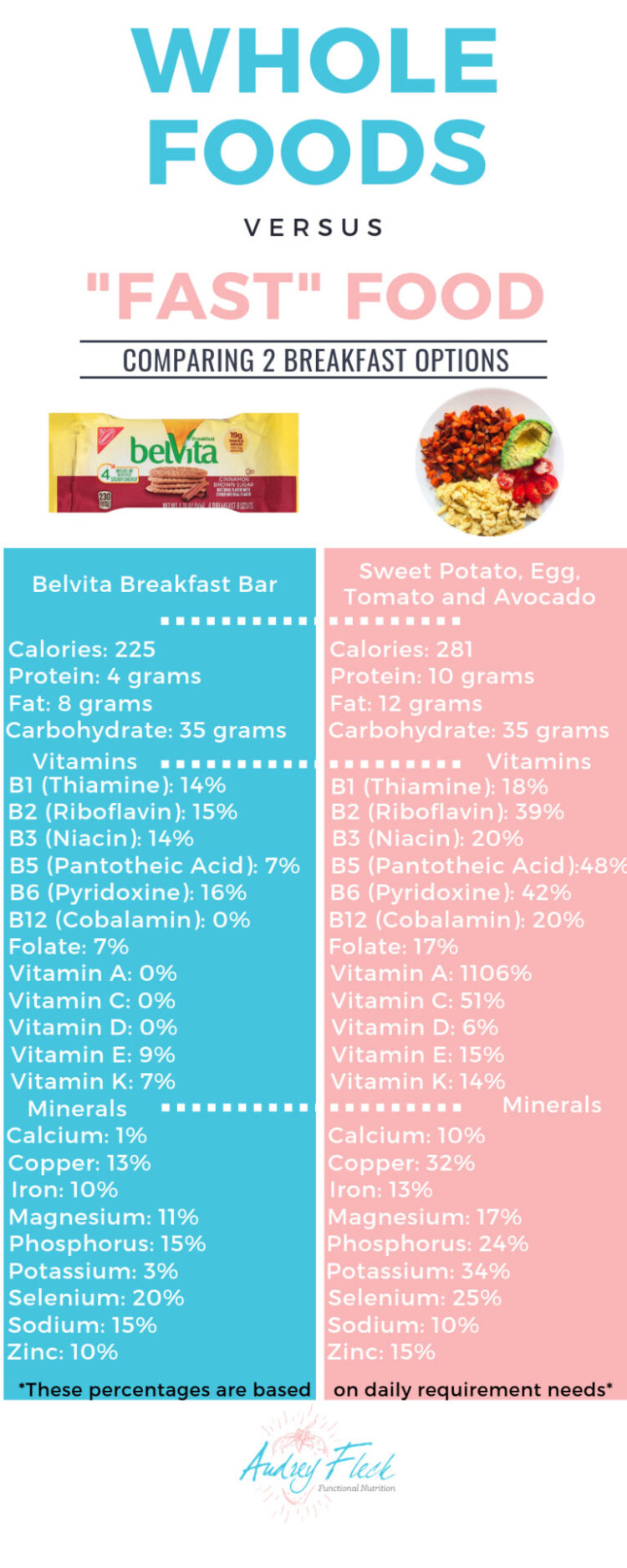
We provide advanced micronutrient testing that investigates your nutritional status. We have rarely seen (maybe if at all), someone who has optimal nutrient levels. Take a look here at how nutrients play a role in regulating weight.

We hope this gets your wheels turning! Stay tuned for part 2 of this series that will cover some of the “higher to reach” fruits of weight loss.
About the Author
Audrey Fleck - MS, RDN, LDN
I’m Audrey Fleck, a dedicated dietitian with over a decade of experience, and the founder of Functional Origins, my private practice located in Bucks County, PA. With a strong educational background, including a BS in Nutrition and Dietetics and an MS in Human Nutrition and Functional Medicine, I specialize in providing an integrative and functional approach to healing, primarily tailored for women.


